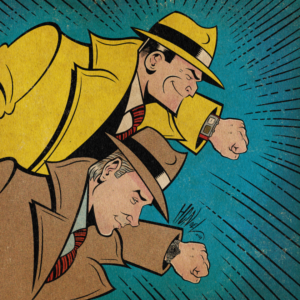A few months ago, in the quietly forgotten folds of the Pacific, three of modern surfing’s most expressive renegades—Harry Bryant, Dion Agius, and Chippa Wilson—boarded a plane not for leisure, not for medals, but for motion. They traveled light but dream-heavy, chasing the kind of wave that doesn’t appear in contest calendars or Google searches. It was for Zipper, a film already pulsing with the anxious, freeform energy of surf’s countercultural roots, and what they found was a section-ending beast of a wave that didn’t just crown the film—it detonated it.
The righthand slab they discovered, almost by chance, is less a wave than a force of nature sculpted for maximal violence. It breaks with no grace, no apology. It opens wide like a wound and snaps shut like a steel door. For many, it would be unapproachable. For these three, it was irresistible. What followed wasn’t just a surf session; it was a showdown. In that remote Pacific theatre, far from any contest scaffoldings or Instagram stories, they painted something primal: a vision of surfing not as sport but as combat poetry.
The Last Act: Surfing as Apocalypse
Zipper isn’t a surf film in the traditional sense. It doesn’t chart growth arcs or nurture sentimental swells. Its final segment, scored to heavy metal and stitched with moody dusk shots, is an elegy to chaos and control. The inclusion of the right-handed Pacific slab as its closing movement is no accident. It functions as both climax and coda—a final, ragged breath after fifty minutes of turbulence.
Harry Bryant, known for his lion-hearted charge and punk-meets-poet energy, throws himself into the maw of the wave with the kind of commitment you can’t teach—only burn into your bones. Where others might hesitate, Harry launches. His boards are treated less as equipment and more as emotional exorcists, splitting the water with sincerity. Watching him take on the slab is like watching a fuse burn toward a firework. He doesn’t surf it; he assaults it with reverence.
Dion Agius, whose career has often straddled art and performance, brings a different energy entirely. There’s an elegance to his confrontation with the beast—a balletic melancholy, as if each line drawn on the face of the wave were sketched with charcoal. He seems to recognize that this wave isn’t about domination but about dialogue. It’s the quiet surfer’s answer to the deafening roar of the sea, and he leans into it, not away from it. In Zipper, Dion’s section reads like a memory you can’t quite place, beautifully shot, powerfully understated.
Then there’s Chippa Wilson—the acrobat, the alchemist. Chippa’s aerial artistry is grounded in a rare combination of fearlessness and imagination. But here, there’s little room for theatrics. The wave is too fast, too heavy, too merciless. And so Chippa adapts. He drops low, locks in, and rides with a narrowed focus. His turns are scalpel-like, his drops precise. It’s Chippa without ornamentation, and that rawness is perhaps more revealing than any spin or flip.
The Sonic Backbone: Heavy Metal and Desolation
What separates this segment from countless others in surf cinema is not just the ferocity of the wave or the stature of its riders, but the deliberate, almost confrontational, choice of soundtrack. Heavy metal pulses in the background—not in a cliché, headbanging way, but as a tonal match to the bleak grandeur of the wave itself. It’s the auditory equivalent of a storm warning, all thunder and dread.
The decision to end the film this way is telling. It’s not a celebratory finale but a reckoning. There are no whoops of joy, no beachside claps. Instead, there’s dust in the lungs and salt in the eyes. It’s a moment that leaves you questioning what surfing even means anymore in the age of drones, sponsors, and soft edits. For Zipper, surfing remains what it always was for the disenchanted and the devout—a dance on the edge of ruin.
Isolation as Atmosphere, Not Aesthetic
Though “a solitary isle in the Pacific” sounds romantic, the film strips away that illusion. The environment isn’t tropical or lush. It’s raw, windburned, almost post-human. The waves don’t roll in; they attack. There are no ambient ukuleles or color-corrected sunsets. The solitude here is real, suffocating at times. It manifests in every empty frame, every shot of the surfers paddling out into the vast, unpopulated ocean. The isle feels like the last outpost on Earth—detached from narrative, from ego, from everything.
The segment taps into something sacred: the necessity of space. Not just physical distance from the world, but emotional space from the noise. In that isolation, the trio finds not peace, but purpose. You sense it in the way the camera lingers—on bruised lips, on waterlogged eyes, on boards snapped at the middle like broken promises. Zipper doesn’t just show surfing; it deconstructs it, strips it down to grit and resolve.
Why It Matters: The New Language of Surf Film
This final chapter of Zipper isn’t just a conclusion; it’s a manifesto. In the current climate of surf media—where clips are judged by likes and swells are announced before they even peak—this segment reminds us that there is still room for mystery, for madness, for menace. It’s not polished, not performative. It’s real. And in its refusal to please, it becomes unforgettable.
What Bryant, Agius, and Wilson accomplish in those last minutes isn’t conquest. It’s communion. With the sea, with themselves, with an ethos that sees beauty in the unrideable, the undesirable, the dangerous. They don’t sell you a dream—they show you a dare. And if you’re honest, part of you wants to take it.
Zipper ends not with resolution but with fracture. It leaves you breathless, not from awe but from impact. Like the slab that closes it out, it doesn’t ask permission to enter your consciousness. It crashes in, uninvited and unforgettable.
No comments yet.







